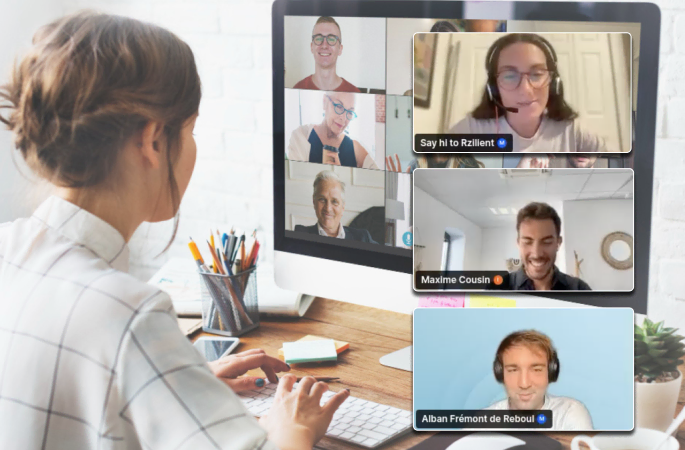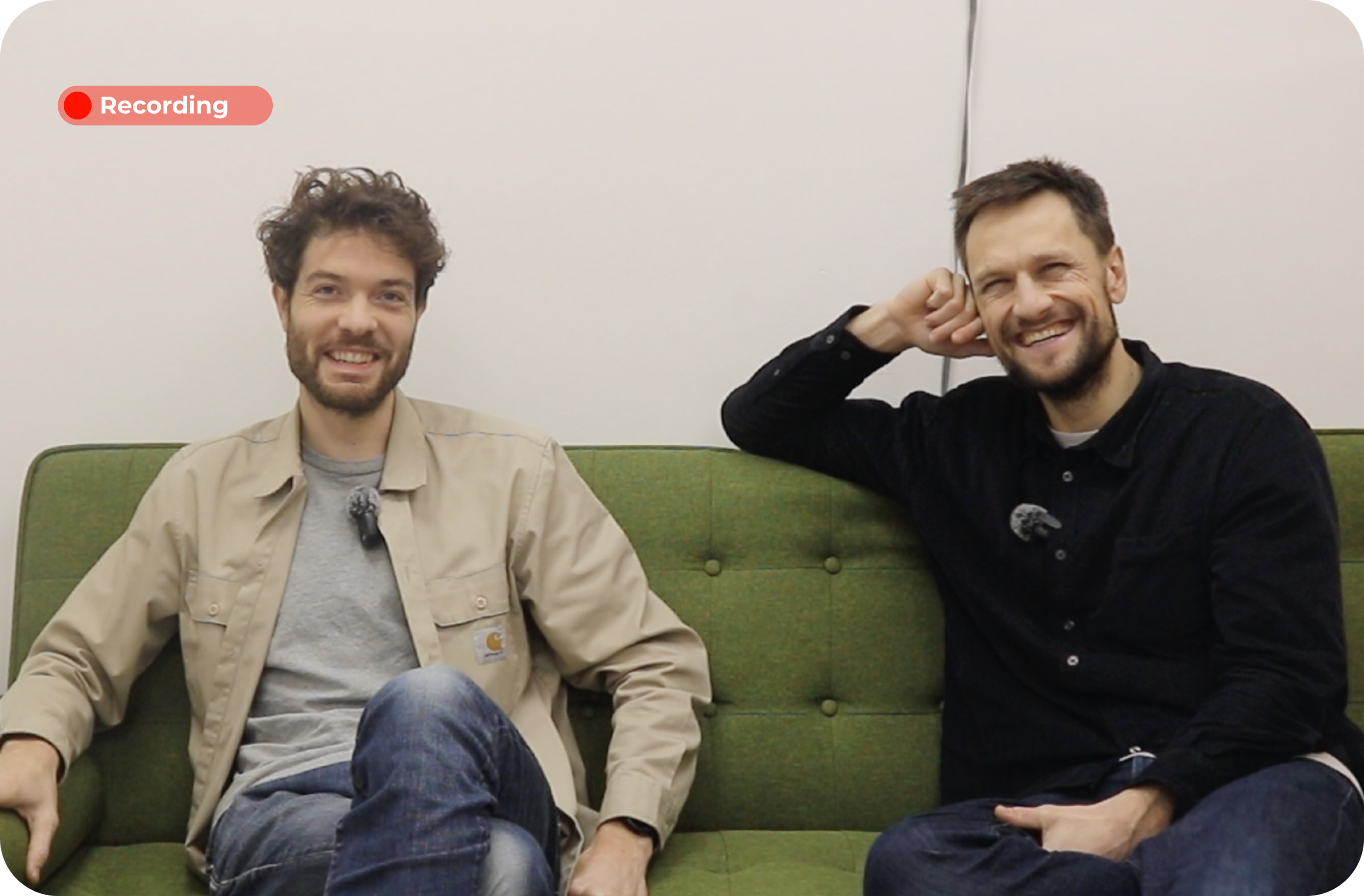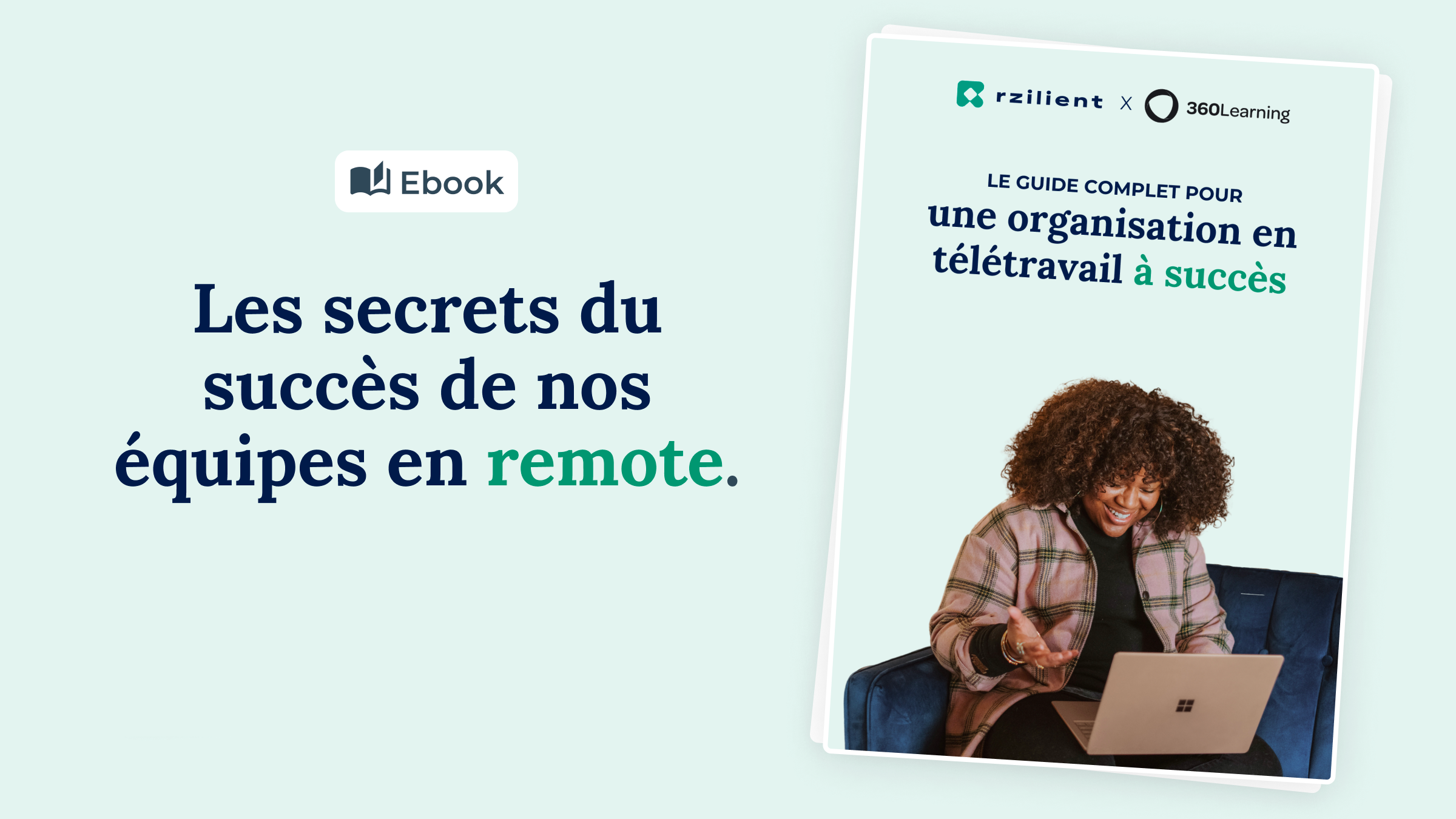Return to the office: Offer an optimal employee experience in 3 steps

Discover our all-in-one solution
The Rzilient team is delighted to have recently offered you a webinar, co-organized with Osol, dedicated to the employee experience and its optimization.
For those who were unable to join us, we offer you here a summary of the key points discussed, as well as the possibility of watching the replay.
Discover our speakers:
- Maxime Cousin, CEO of Osol (whose mission is to make it possible to work from anywhere, even in the office!) and also a Future Of Work consultant at a firm called Topic;
- Alban Frémont de Reboul, sales manager at Rzilient;
- and Audrey Pogu, Rzilient marketing manager.
The webinar opened with a look back at the impacts of the Covid-19 pandemic, which has seriously shaken up and questioned the organization of many companies.
What comes out of this tipping point? One much stronger consideration of the employee experience by companies.
And to illustrate the importance of remote work, here is a statistic: 82% of workers feel more productive when working remotely in 2023, according to Owl Labs. The challenge is therefore high to unleash the growth potential of our businesses!

Here is a presentation of the 3 steps presented in the webinar, to successfully optimize your employee experience.
Step 1: take stock of the situation and choose the right model
A quick reminder of the main advantages of working remotely, to start with. It offers your employees:
- The ability to organize their day differently, depending on their ability to concentrate or to be creative;
- one significant time savings, thanks to the absence of work/home transport;
- The possibility of having a lot fewer distractions and therefore the ability to be able to focus more effectively.
4 main models exist when it comes to working in a company:
- The “Full Office” : employees come to the office full time;
- The supervised hybrid : employees alternate between office and remote work, in a supervised manner;
- The free hybrid : teleworking is freely used by employees;
- The “Full Remote” : the teams work full time remotely.
Maxime also mentions an important point: the need to ask yourself the question of activities that must be carried out in person (such as training and team time) and those that can be done remotely without difficulty (email processing, calls, information meetings, etc.).
Here are now the main actions to take to choose the best work organization model, i.e. the most suitable for your company and your employees.
Consult your employees to get their feedback
There is nothing like asking the question to the first interested parties: your employees!
Take into account the neurodiversity is also interesting. Concretely, each employee has their own personality and psychology.
For example:
- some people are introverts and would prefer to work alone, at home;
- others are extroverted, or very social, and have a visceral need to be in contact with other people;
- some employees are very autonomous and others work better with a more regular level of interaction and follow-up.
Taking this diversity into account is a determining factor in optimizing the employee experience!
Take into account your corporate culture

Corporate culture also plays an important role. The speakers mention two concrete cases.
Chez hermes, for example, it is inconceivable for teams to work remotely, because the history of the company is very linked to equity between employees. However, since the “small hands” necessarily work in full office, the rest of the team chooses to stay on this model, out of solidarity.
THEAlan online insurance, on the contrary, filters its candidates for entry, according to their acceptance to work remotely only!
Study the impact on your business
Not all businesses are in a position to go full remote. This is the case, for example, in retail (distribution) or when production is physical.
Adapting to the legal framework
You must also take into account the legislation and - if necessary - adapt the employment contracts, procedures and working conditions of your employees.
Consult your financial department
Working remotely represents:
- expenses (reinforced monitoring required, teleworking bonuses, etc.);
- savings (optimization of workspaces, lower IT expenses, thanks to BYOD, etc.).
Your financial department will be able to enlighten you on the financial impacts of the decision to switch to teleworking.
Step 2: adapt your business
The speakers then offer a series of best practices on adapting your company to remote work.

The offices
For Maxime, the office still makes sense today. It is important to:
- Define workspaces dedicated to specific activities ;
- Offer a plurality of spaces ;
- work on furniture and design in order to stimulate creativity and well-being;
- Play on a Continuum of collaboration, for example by choosing not to offer fixed workstations.
The technological environment
Rzilient is experienced in supporting companies that work in full remote.
Alban uses his experience to propose numerous best practices to adopt:
- optimize your IT fleet, by choosing the right tools and by ensuring a strong integration of IT services;
- offer your teams a virtual office, such as a 2D metaverse, which allowsimprove the quality of conversations (compared to tools such as Slack or email);
- think about details, such as offering office furniture that facilitates the installation of computer equipment ;
- offer useful features, such as being able to lock your computer or delete your data remotely;
- and finally, offer a quality IT support service, via all relevant communication channels (Slack, email, email, telephone, telephone, Teams, chat...), with the aim that no employee wastes time because of a bug or software difficulty!
Corporate culture
Audrey then offers solutions for develop a corporate culture that is more adapted and conducive to intellectual stimulation.
These solutions must adapt to the working methods proposed:
- hybrid or remote;
- according to the plurality of spaces, etc.
In reality, it is from the moment of hiring that the employee experience must be aligned with the corporate culture, especially in a remote work context. It is much more complex to instill a corporate culture in activities that are carried out primarily remotely, and it is therefore vital to Plan time for exchange and team building to make up for that.
Step 3: support and improve continuously
Remote operation involves supporting your employees in this practice.
It is necessary to optimize uses regularly, through these actions:
- implement and communicate best practices. This can involve writing a playbook, setting upCarefully prepared onboardings, awareness-raising on the rules to be respected, etc.
- train and support employees, through communication on the new services offered, training sessions and optimized technical support;
- improve the functioning of the company, thanks to the commitment of employees: satisfaction surveys, brainstorming sessions, individual exchanges, etc.
The speakers insist on The central role of the playbook. This reference document is the referee when a question or doubt arises about the processes or organization of the company. Its key advantage? It offers a transparent work environment and facilitates team alignment..
Finally, it is vital to remember that remotely, it is not always possible to have an exact vision of the teams' work context. To align everyone with the mission of your company, it is necessary to work well on team training and individual performance reviews.







